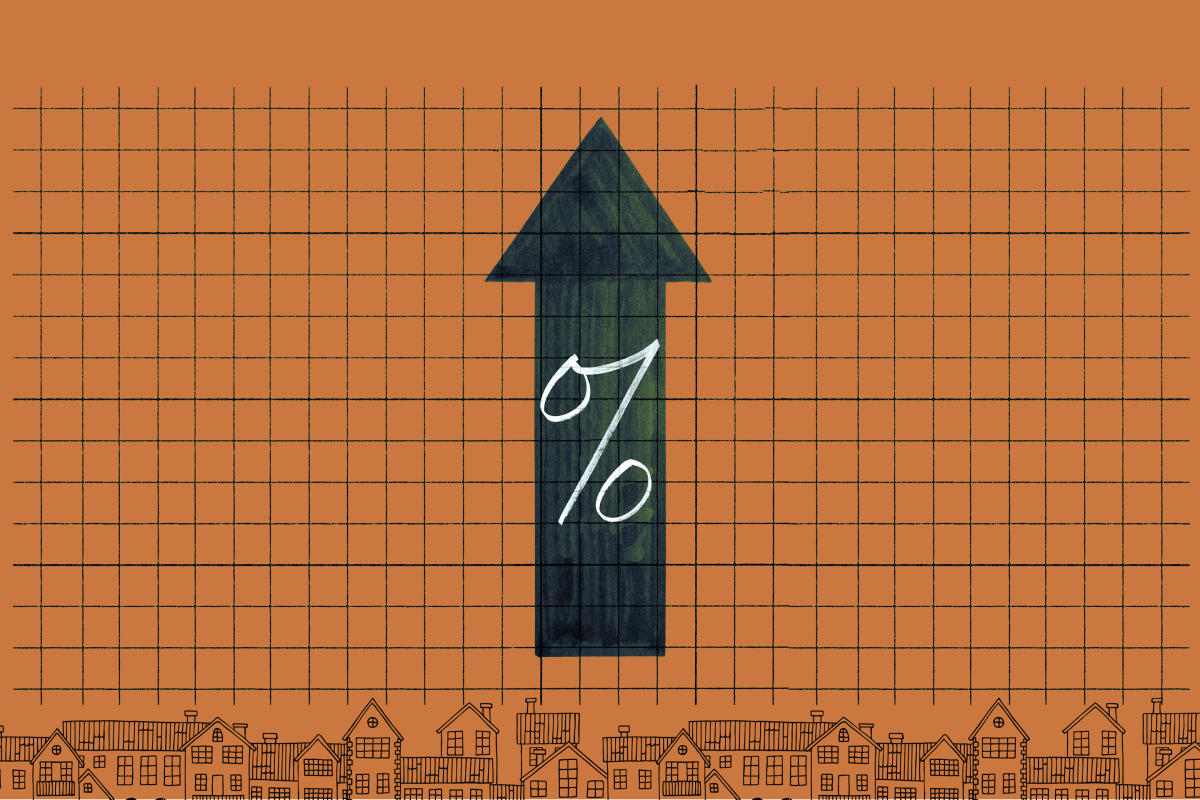Personal Finance
Mortgage Rates Jump Higher: Freddie Mac

Buyers can’t seem to catch a break. After five weeks of decline, mortgage rates popped back up.
The average interest rate on a 30-year fixed-rate loan increased to 6.39%, a change of 0.12 percentage points over the past seven days according to Freddie Mac’s weekly rate data. The rate for a 15-year fixed-rate loan saw an even bigger jump, increasing by 0.22 percentage points to 5.76%.
Shifting market expectations caused rates to move higher this week, according to Sam Khater, Freddie Mac’s chief economist, in a press release. Khater noted that although home prices are stabilizing, low inventory and affordability remain a challenge for many potential buyers.
“Unless rates drop into the mid-five percent range, demand will only modestly recover,” he added.
Mortgage rates continue to influence the housing market in many different ways.
During the height of the pandemic, super-low mortgage rates led to a boom in buyer demand, pushing home sales and prices to new heights. Buyers were able to afford larger, more expensive homes thanks to the lower monthly payments afforded by lower borrowing costs. Low rates also gave existing homeowners new ammunition to refinance their home loans.
The current market is an entirely different beast.
According to a recent survey by the listing site Realtor.com, the vast majority of potential home sellers (85%) intend to buy another home. With mortgage rates oscillating between 6% and 7%, these homeowners now face the prospect of trading in their current mortgage rate for one that’s twice as high.
As a result, 82% of would-be sellers report feeling trapped by their low rate. More than half are putting off listing their homes until mortgage rates move lower.
With more homeowners putting their selling plans on hold, there’s a lack of new listings coming onto the market, leaving buyers with fewer options to choose from.
Rates rise on signs of economic resilience
The economy may be cooling down, but it’s taking its sweet time.
Recent readings on inflation, employment and wage growth have all been moving in the right direction (i.e. lower). But these improvements aren’t enough to satisfy the Federal Reserve, which says we’ve got a long way to go before the economy normalizes.
Bond yields over the last week have “ticked higher, taking mortgage rates with them,” Hannah Jones, economic data analyst for Realtor.com, said in a statement.
What’s more, there are still concerns that the Fed will continue its aggressive monetary policy of increasing the federal fund rate, since inflation remains well above the target range of 2%. If the Fed does choose to increase that rate — which elevates the cost of borrowing and, in turn, decreases consumer prices — it would put even more upward pressure on mortgage rates.
Core inflation, a metric that excludes the fluctuating cost of food and fuel, is of particular concern for the central bank. Headline inflation (or total inflation) has steadily decreased over the past few months, core inflation has not.
“Core inflation has basically moved sideways with no apparent downward movement,” said Federal Reserve Governor Christopher Waller in a speech on Friday.
More from Money:
Best Mortgage Lenders of 2023
Mortgage Calculator by Money
How to Get the Lowest Mortgage Rate: A Step-by-Step Guide
© Copyright 2023 Money Group, LLC. All Rights Reserved.
This article originally appeared on Money.com and may contain affiliate links for which Money receives compensation. Opinions expressed in this article are the author’s alone, not those of a third-party entity, and have not been reviewed, approved, or otherwise endorsed. Offers may be subject to change without notice. For more information, read Money’s full disclaimer.
Read the full article here

-

 Side Hustles6 days ago
Side Hustles6 days agoKFC Announces Saucy, a Chicken Tenders-Focused Spinoff
-

 Investing6 days ago
Investing6 days agoPalantir, Anduril join forces with tech groups to bid for Pentagon contracts, FT reports By Reuters
-

 Side Hustles5 days ago
Side Hustles5 days ago4 Ways Content Can Make or Break the Customer Experience
-

 Passive Income3 days ago
Passive Income3 days agoWhy Emotional Intelligence Is the Key to High-Impact Leadership
-

 Side Hustles5 days ago
Side Hustles5 days agoHow to Build a Legacy of Leadership in Your Business in Six Proven Strategies
-

 Side Hustles6 days ago
Side Hustles6 days agoHow Mentorship Shapes Resilient Leaders and Thriving Teams
-

 Personal Finance2 days ago
Personal Finance2 days agoTop personal finance New Year's resolutions for 2025
-

 Make Money6 days ago
Make Money6 days ago10 Unexpected Hacks to Maximize Your 401(K) Savings


















